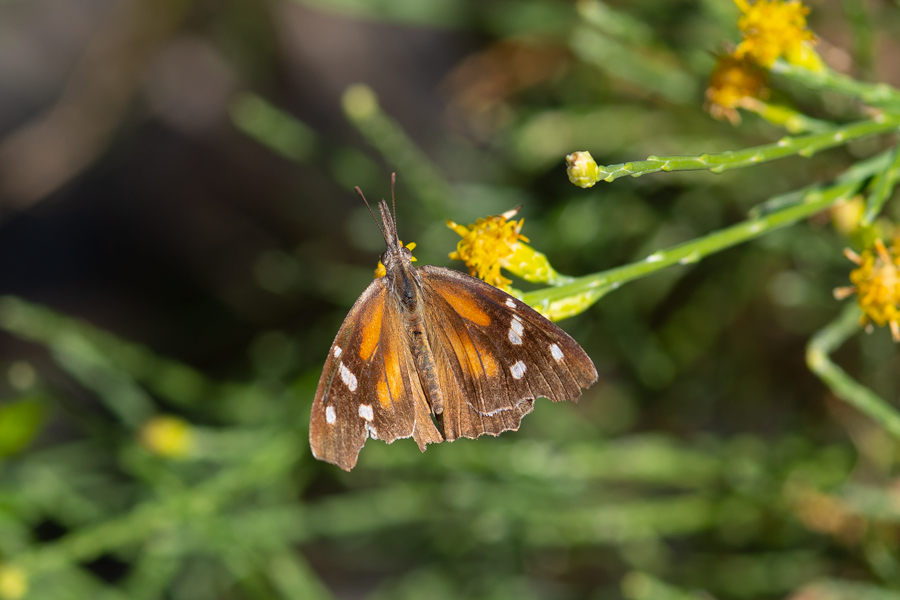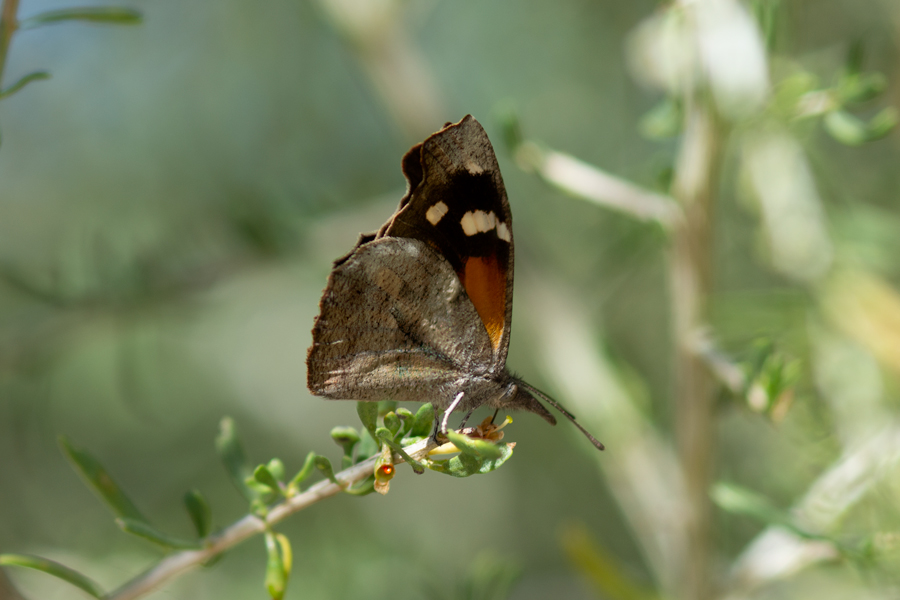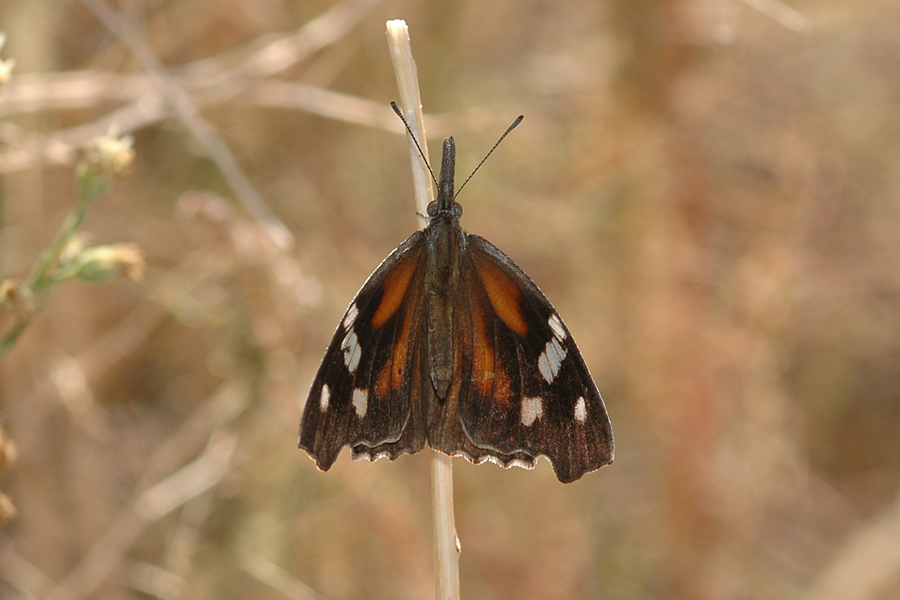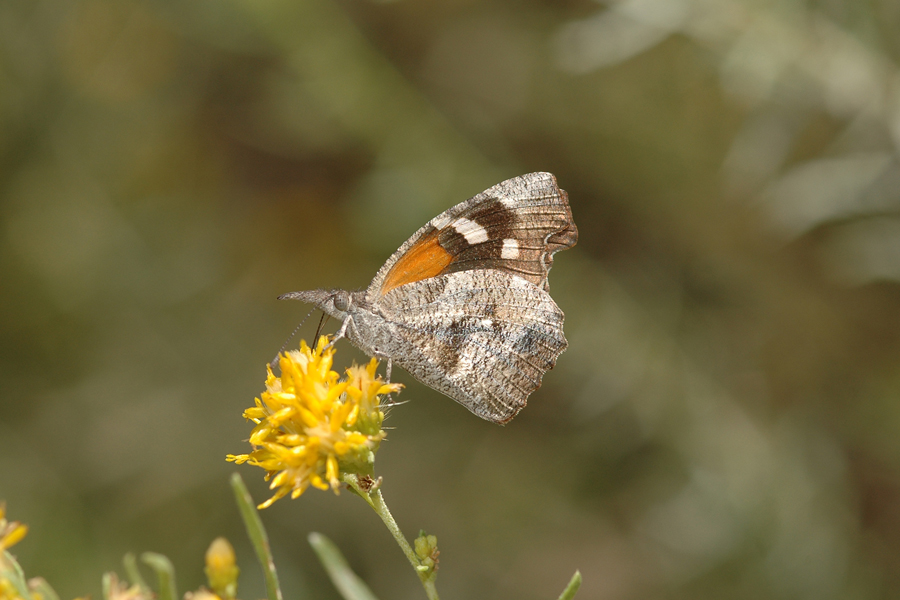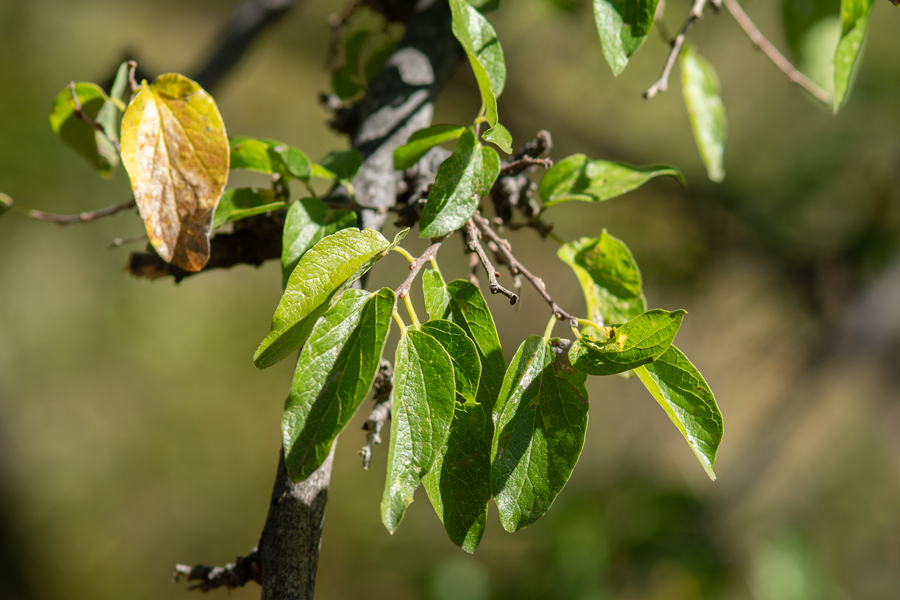Libytheana carinenta streckeri
Western Snout
An odd butterfly that doesn't fit neatly into the Nymphalidae family for several reasons. One is the elongated palpi that gives them their common name; another is the use of the forelegs by females for walking, while males have the "brushfoot" front legs; and a third odd thing is the caterpillar, which has no spines and resembles green pierid larvae, not nymphalid larvae. The larval food plant is net leaf hackberry trees (Celtis reticulata), which grows in parts of California, but the snout is usually a stray here. I found them in good numbers at Rattlesnake Canyon in the Johnson Valley in October 2022, and most records seem to be from autumn.
I found quite a few snouts taking nectar at the copious scale broom up Rattlesnake Canyon in the Johnson Valley. This was October 19th, 2022; they were there on the 9th as well, but I didn't see any there on November 4th or 20th, nor were they flying there on October 4th, 2023.
Snouts - Libytheana carinenta streckeri - really do have prominent "snouts". This one was at Patagonia Lake State Park in southern Arizona. October 16, 2019.
Western snouts are pretty rare in Southern California but they are common in Arizona. This was one of about a hundred that were clustered on two bushes I found on the roadside of Hwy 79 south of Phoenix on the way to Tucson, AZ. September 25, 2007.
A western snout at the Boyce Thompson Arboretum, Pinal Co. AZ, September 25, 2007.
Celtis reticulata (net leaf hackberry) is the larval food plant of the snout butterflies.
©Dennis Walker
